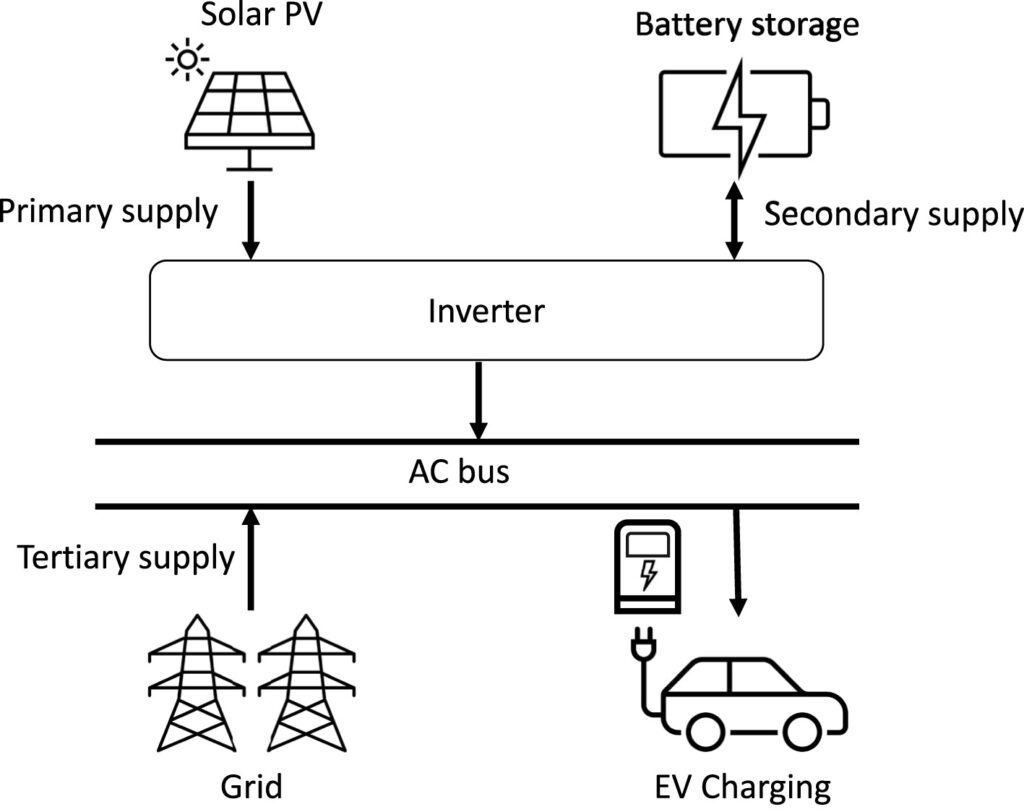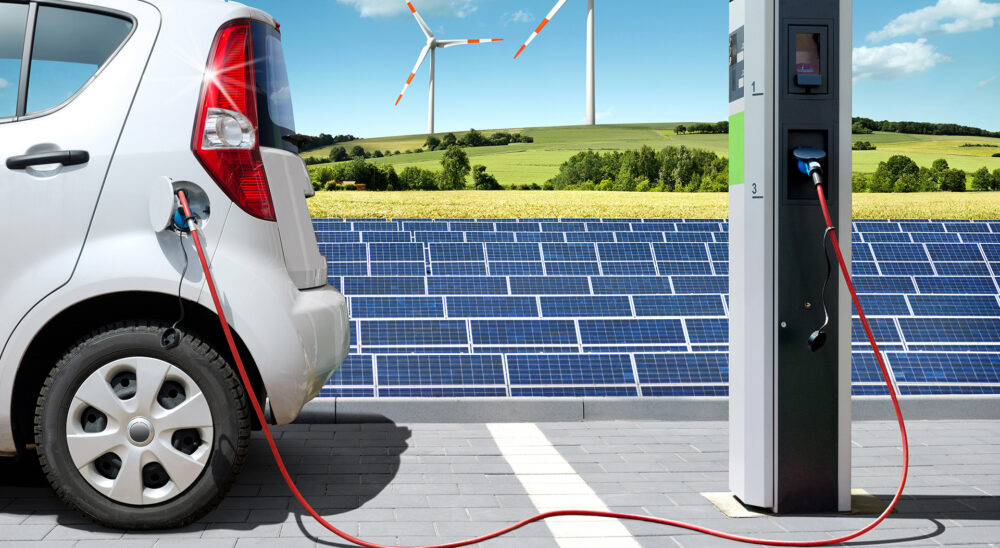In this paper, Christopher Hull (Energy and Power Group, University of Oxford), Jacques Wust (M.Eng student, Department of Electrical and Electronic Engineering, Stellenbosch University) and Professors Thinus Booysen (Department of Electrical and Electronic Engineering, Stellenbosch University) and Malcolm McCulloch (Energy and Power Group, University of Oxford) present a novel methodology that incorporates grid constraints into a model for optimising PV-ES capacity.
They also explore the effects of optimistic and conservative grid constraint scenarios and varying degrees of fleet EV adoption on PV-ES-CS system performance through a case study in South Africa. To determine the most cost-effective system design, the PV and ES components are optimised to maximise net present value (NPV).
Background to the Research
Given their efficiency and environmental benefits, electric vehicles (EVs) are poised to dominate the future automotive market. The integration of renewable energy and EV technology, particularly solar-storage systems at charging stations, offers a promising solution to challenges like grid reliability, energy efficiency, and carbon emissions.
EV fleets have the potential to mitigate the financial and operational impact of these limitations while also promoting cleaner energy through integrated photovoltaic-energy storage-charging station (PV-ES-CS) systems. Such systems enhance grid resilience and contribute to sustainable, decentralised transportation networks.
However, grid constraints, such as load shedding in developing countries and active network management in developed countries, challenge the integration of EVs into power systems worldwide. The effectiveness of these systems, though, hinges on the specific load they serve, and many commercial fleets might only partially electrify, thereby limiting their energy demand.
This calls for the development of methodologies that consider grid constraints when designing and assessing PV-ES-CS systems, in addition to understanding the impact of varying levels of EV adoption on system performance.

Fig. 1. Schematic of the grid-tied solar PV and energy storage-powered EV charging station.
Insights From the Research
The researchers’ analysis reveals three key insights: First, it’s essential to time PV-ES investments in accordance with the planned fleet electrification strategy. Second, PV-ES system performance is sensitive to the frequency and predictability of grid constraints, emphasising the need for careful planning and adaptive strategies in regions with frequent grid issues.
Third, trickle charging can significantly affect system feasibility and economic performance, especially when EV adoption is low. Leveraging trickle charging offers a way to enhance the economic viability of PV-ES systems, particularly for fleets with peak loads in the morning and evening.
Final Thoughts
These findings not only deepen our understanding of integrating renewable energy into commercial fleet operations in grid-constrained and capital-limited environments but also provide practical guidance. The developed methodology serves as a valuable tool for fleet owners in these settings, enabling them to plan PV-ES investments effectively, make informed decisions, and expedite the transition to sustainable and economically viable transportation.
Download and read the full paper at https://www.sciencedirect.com/science/article/pii/S0306261924013734





